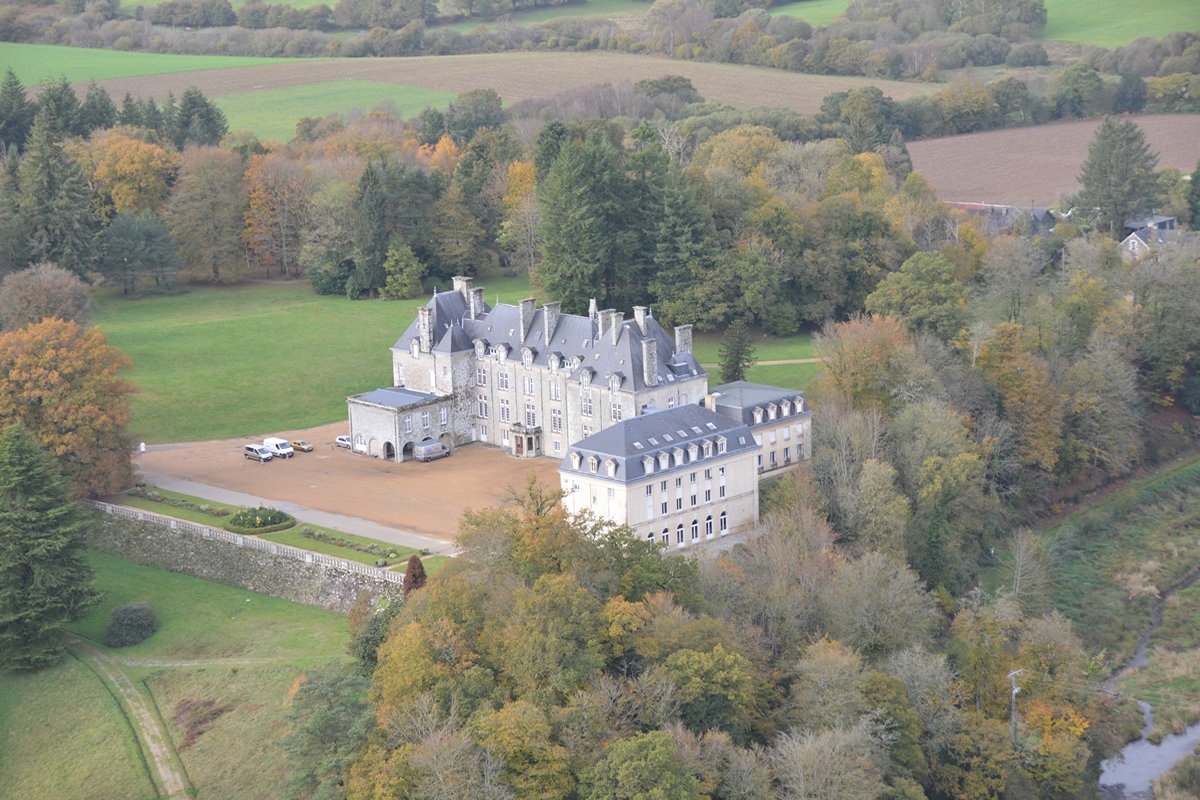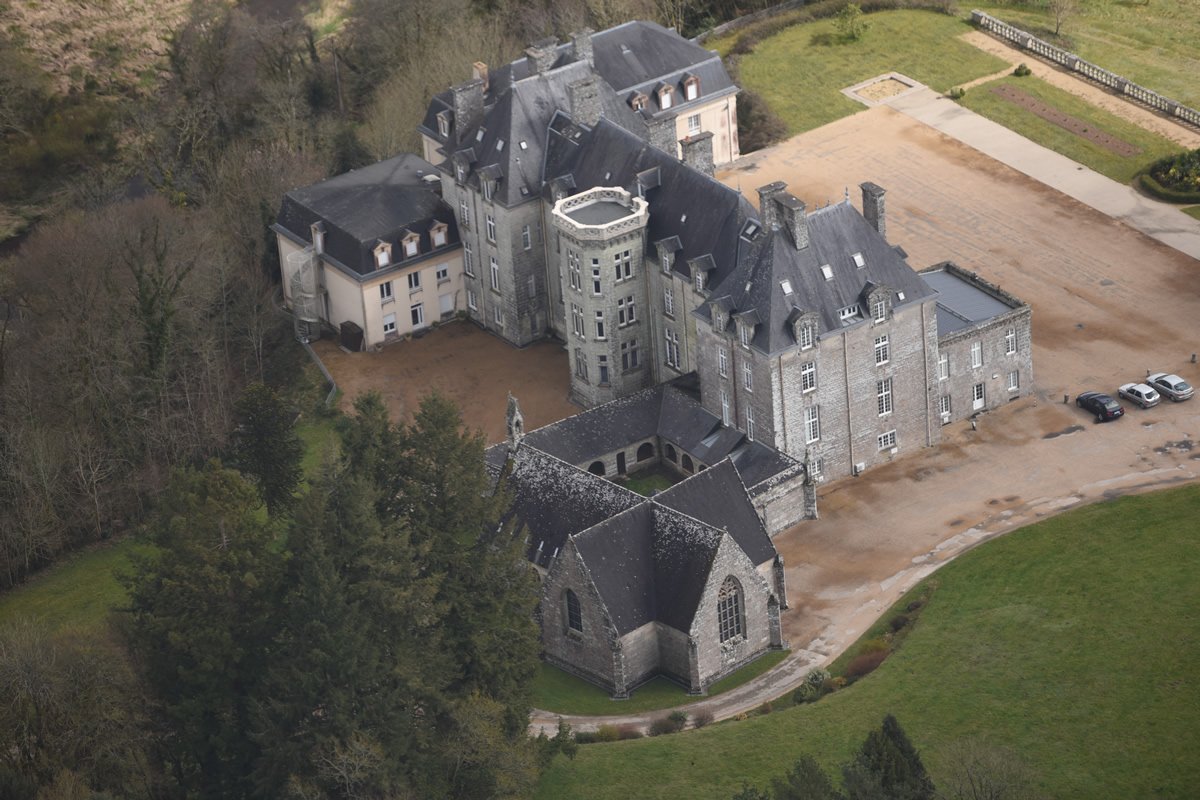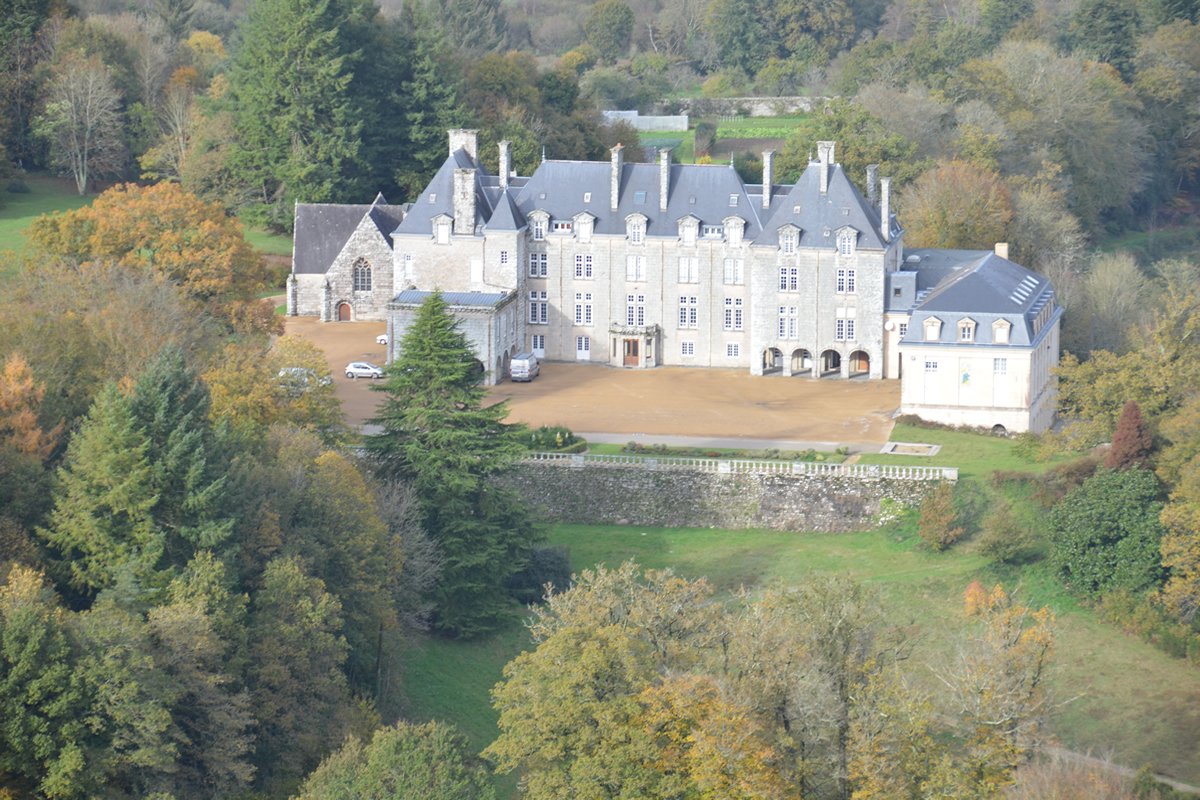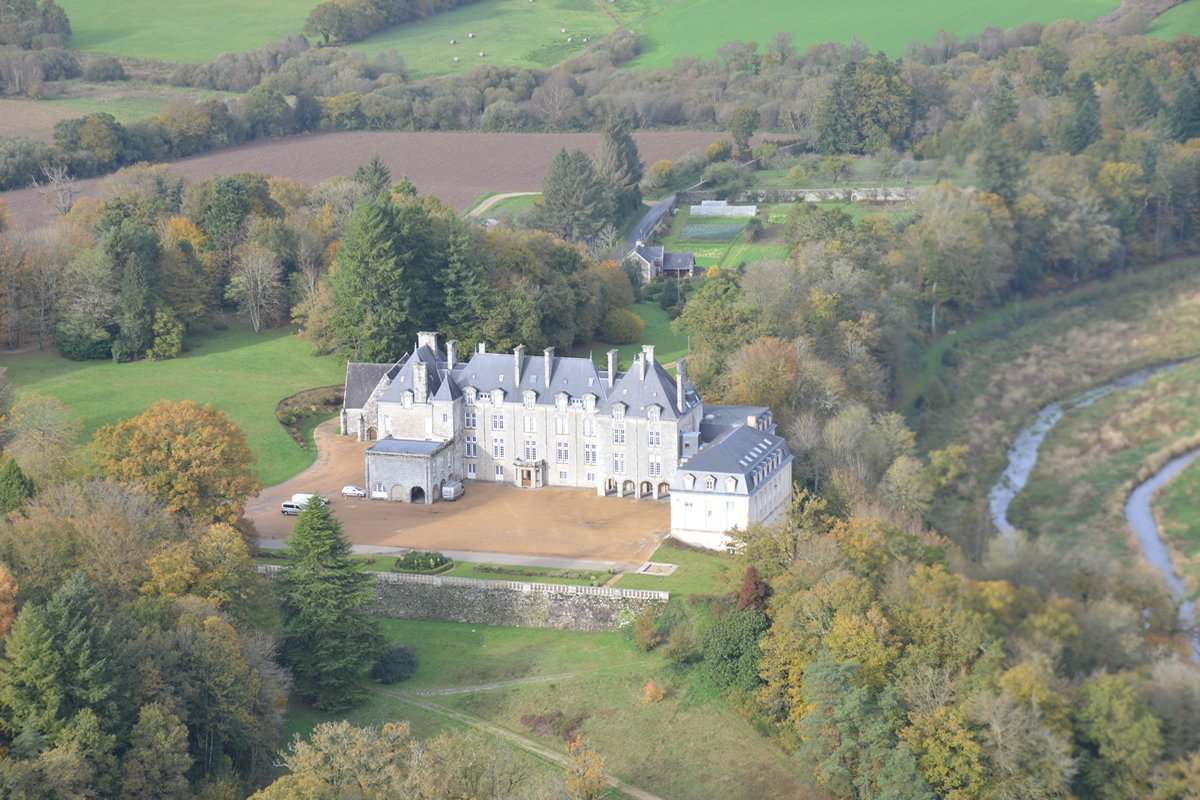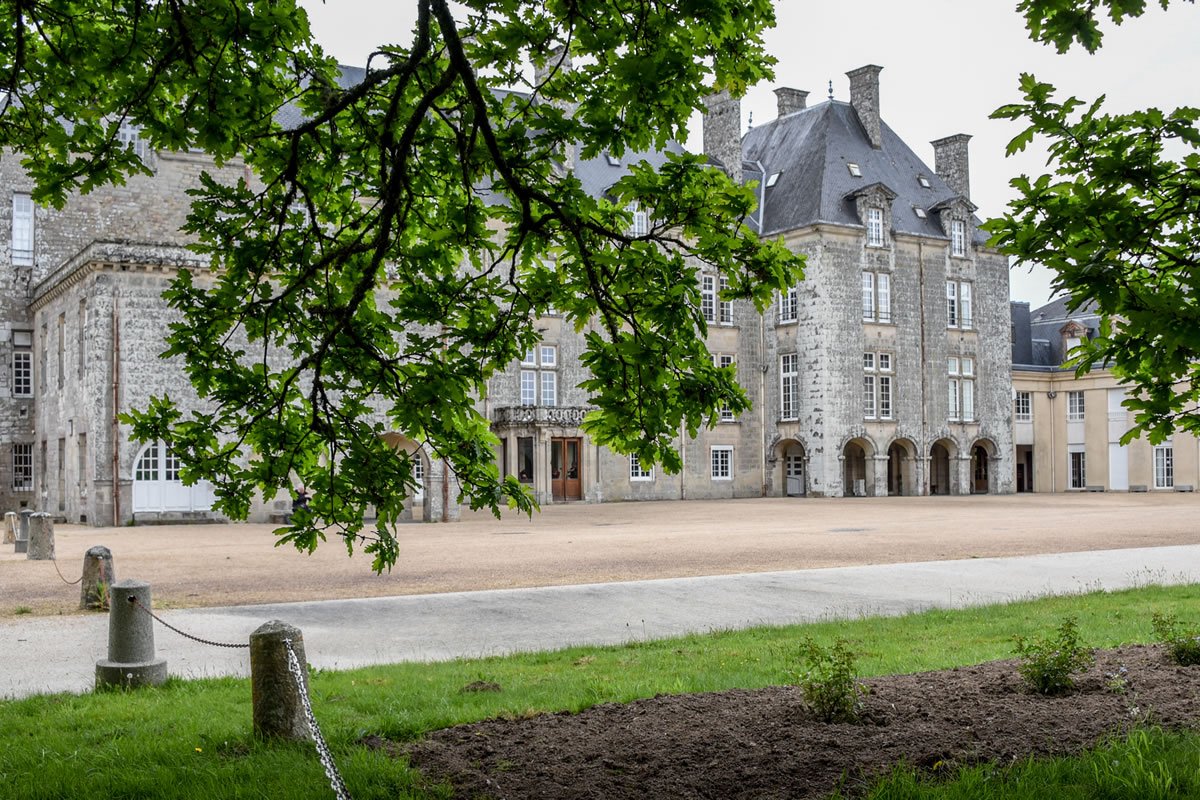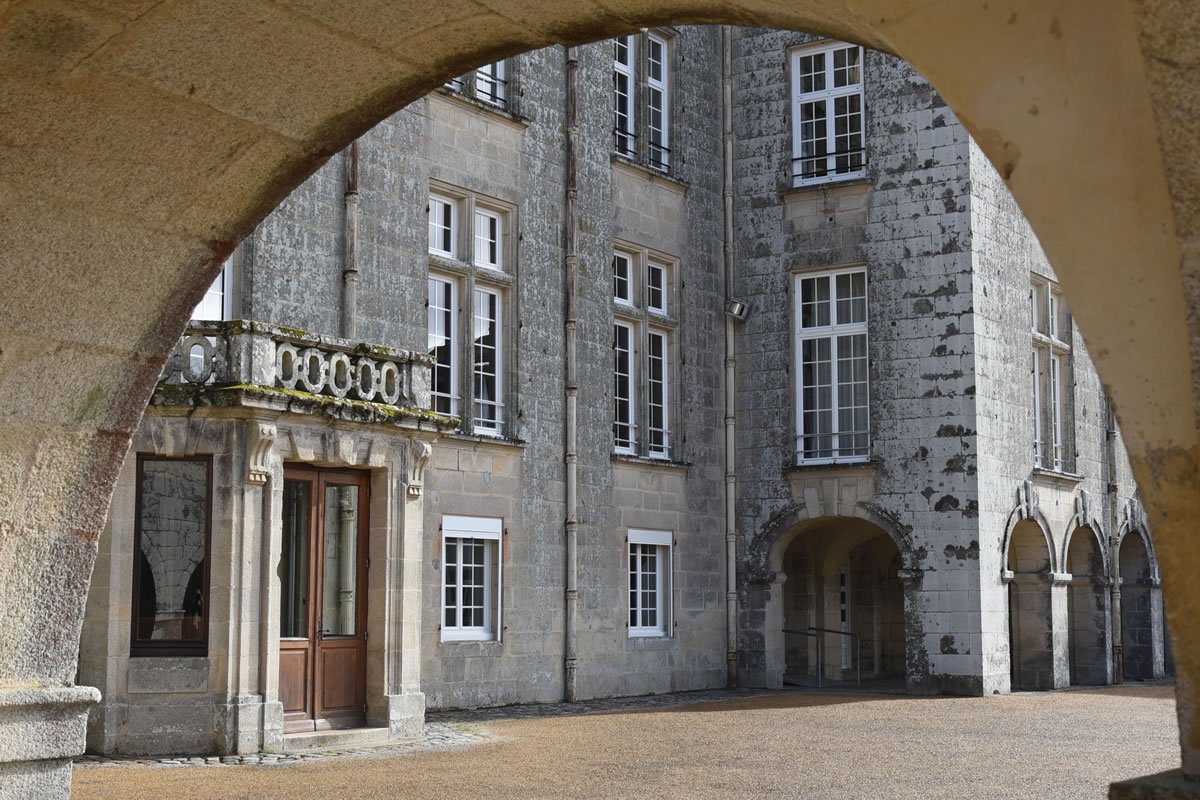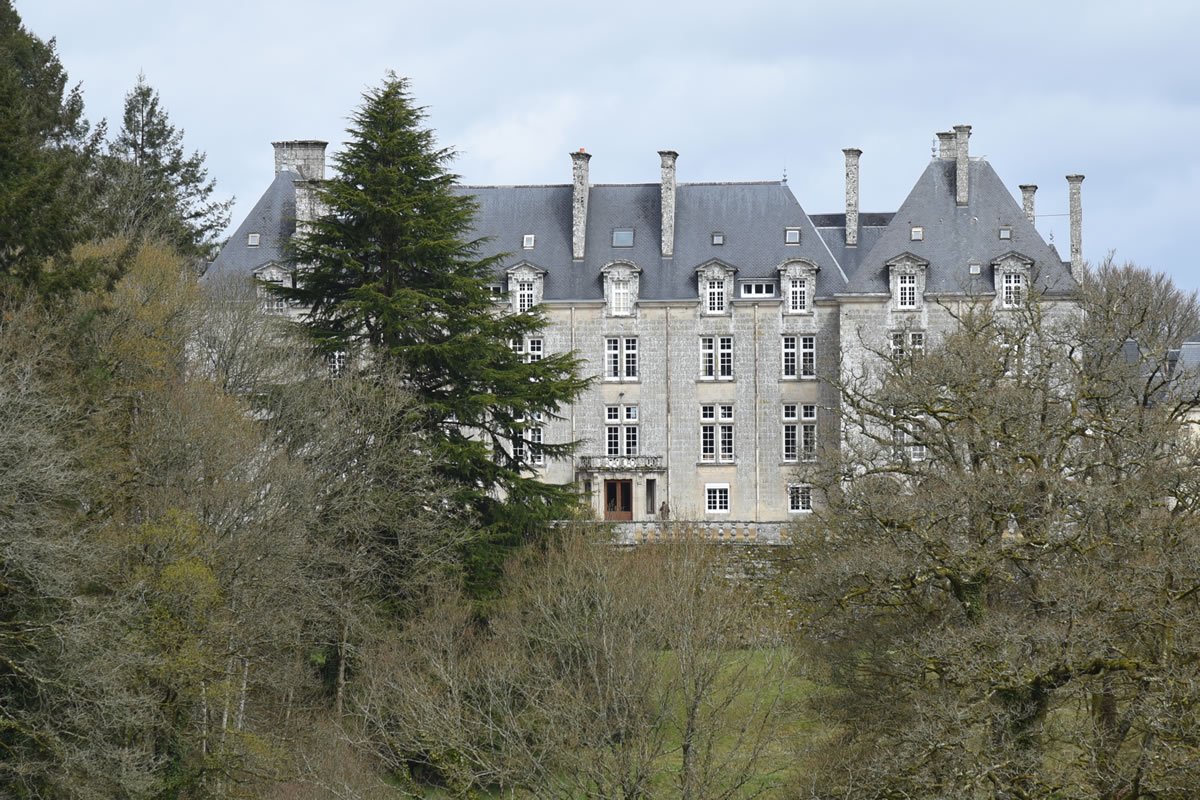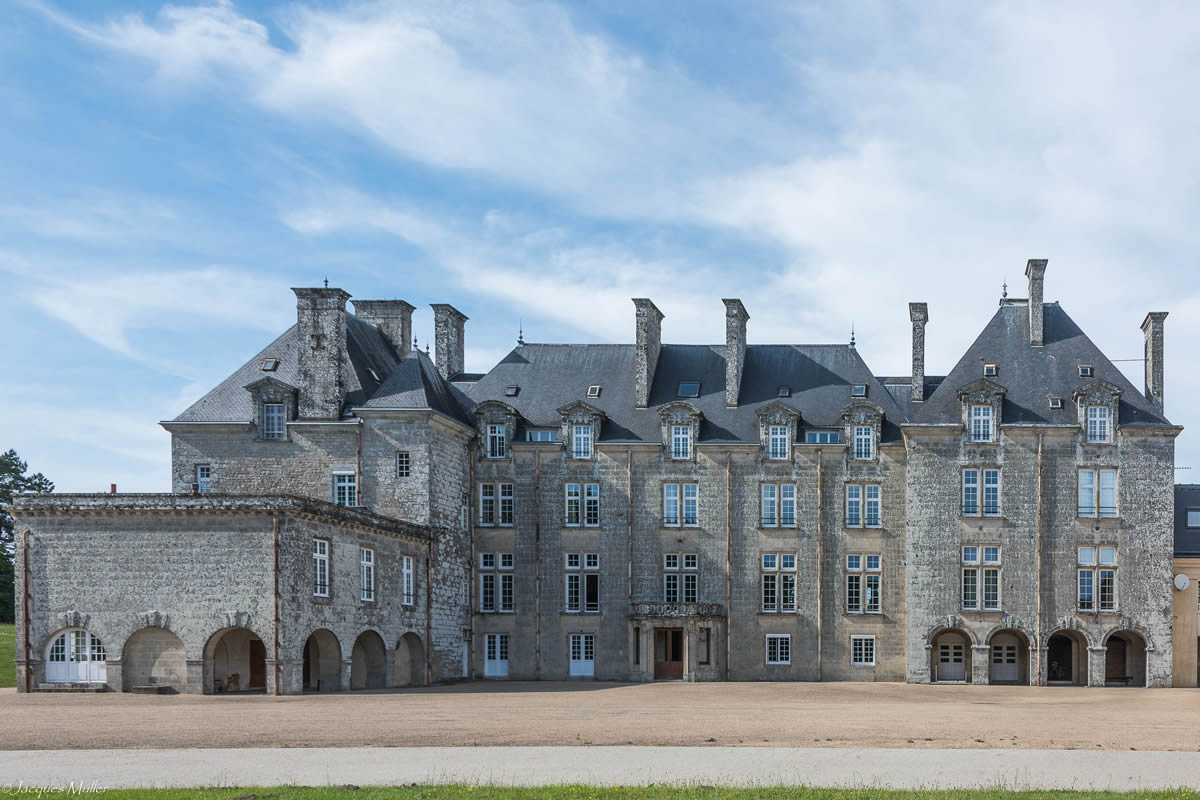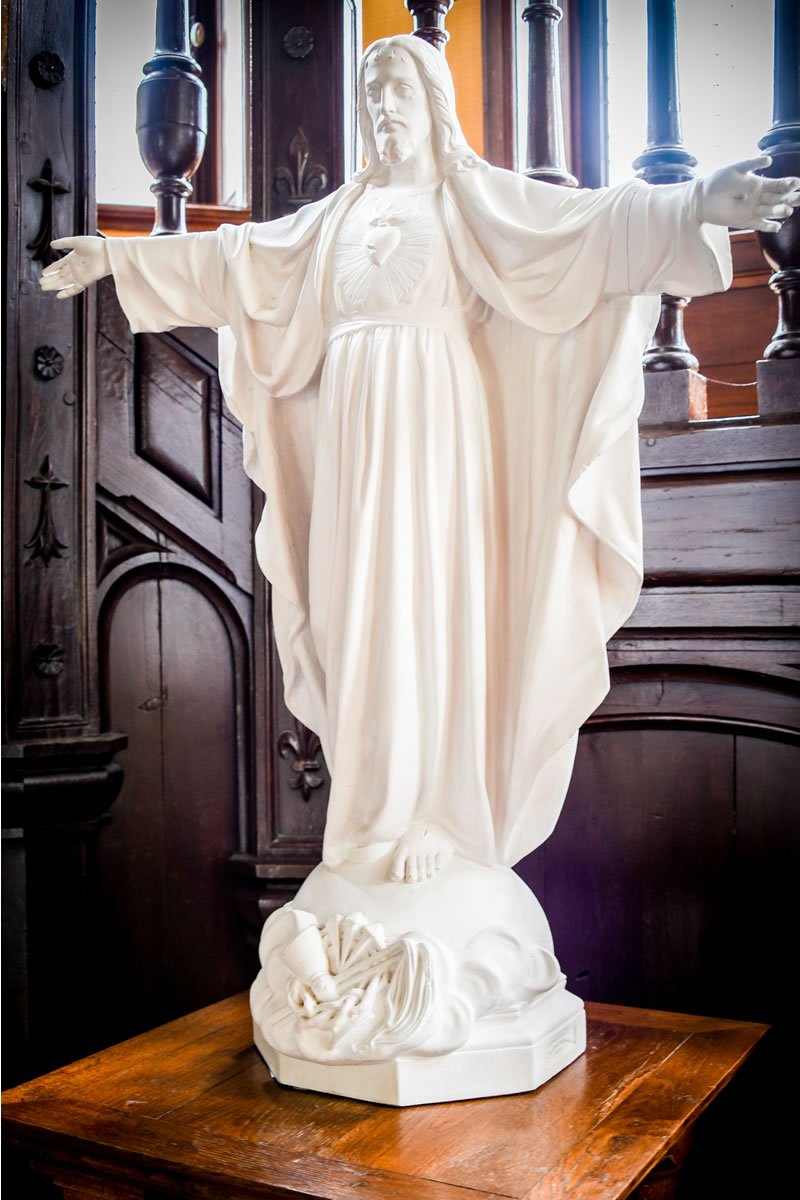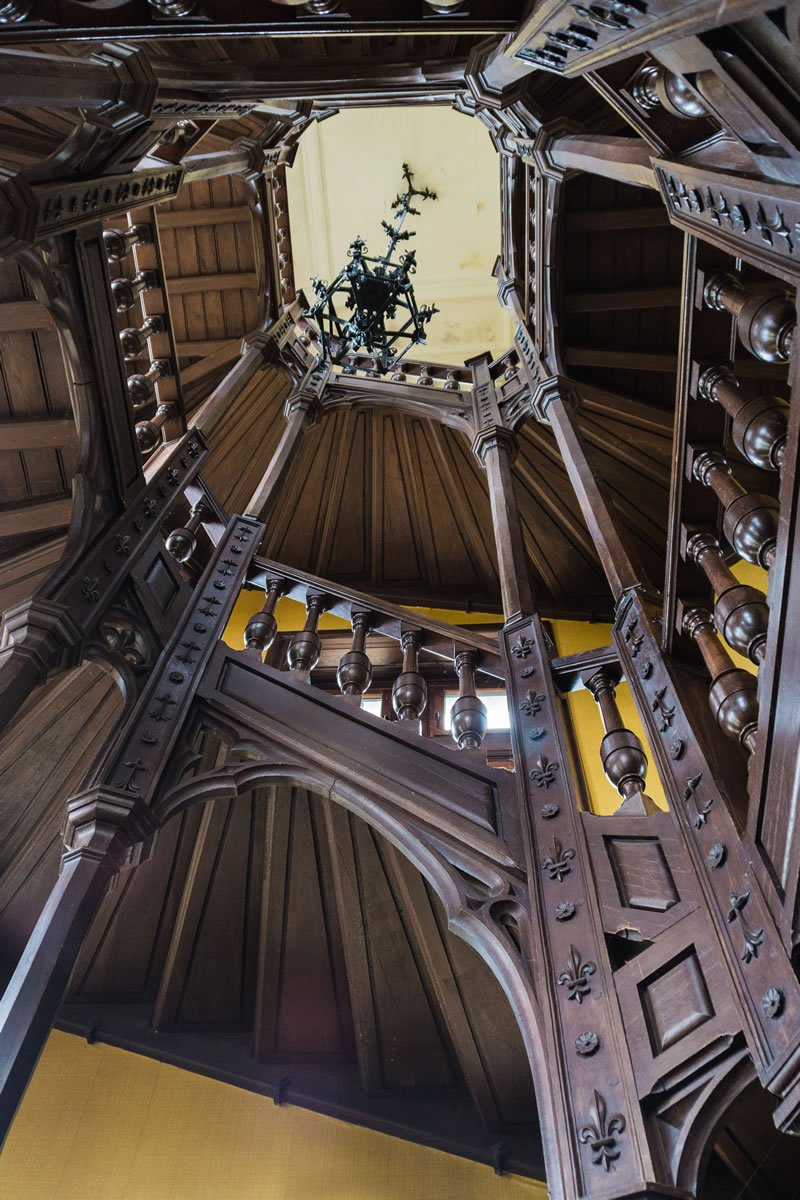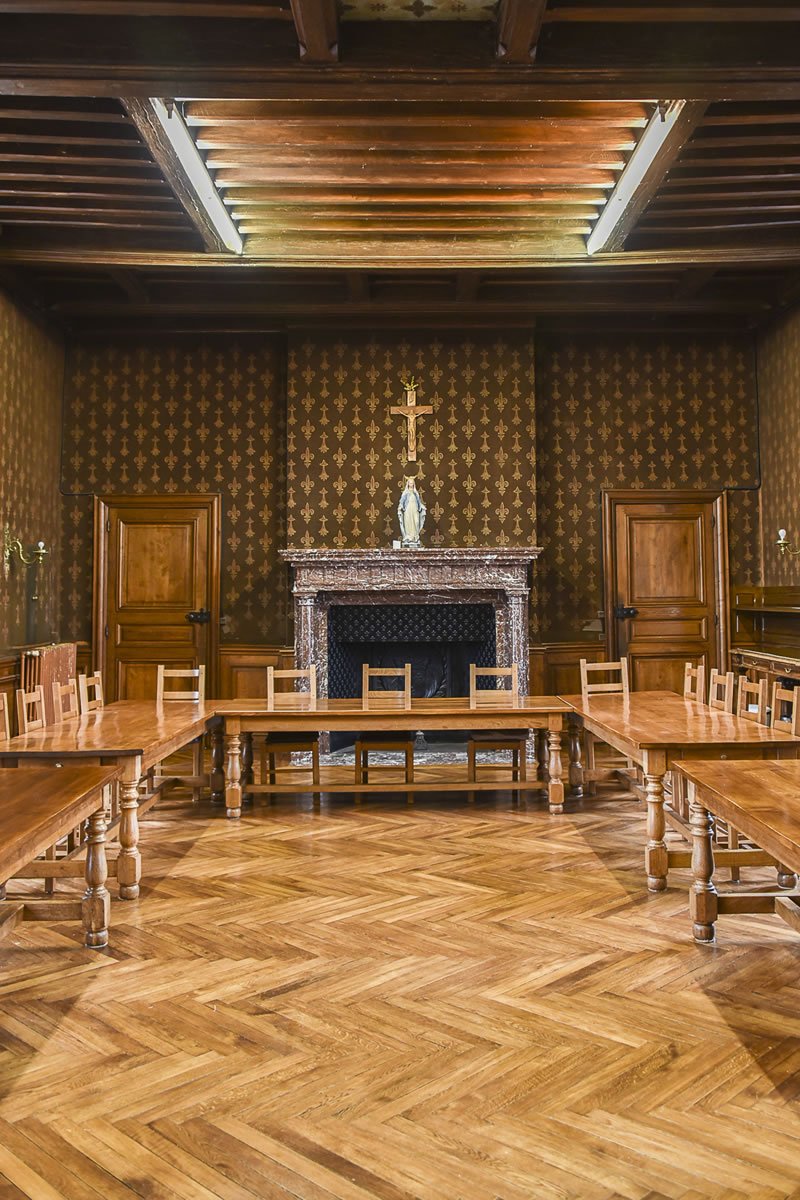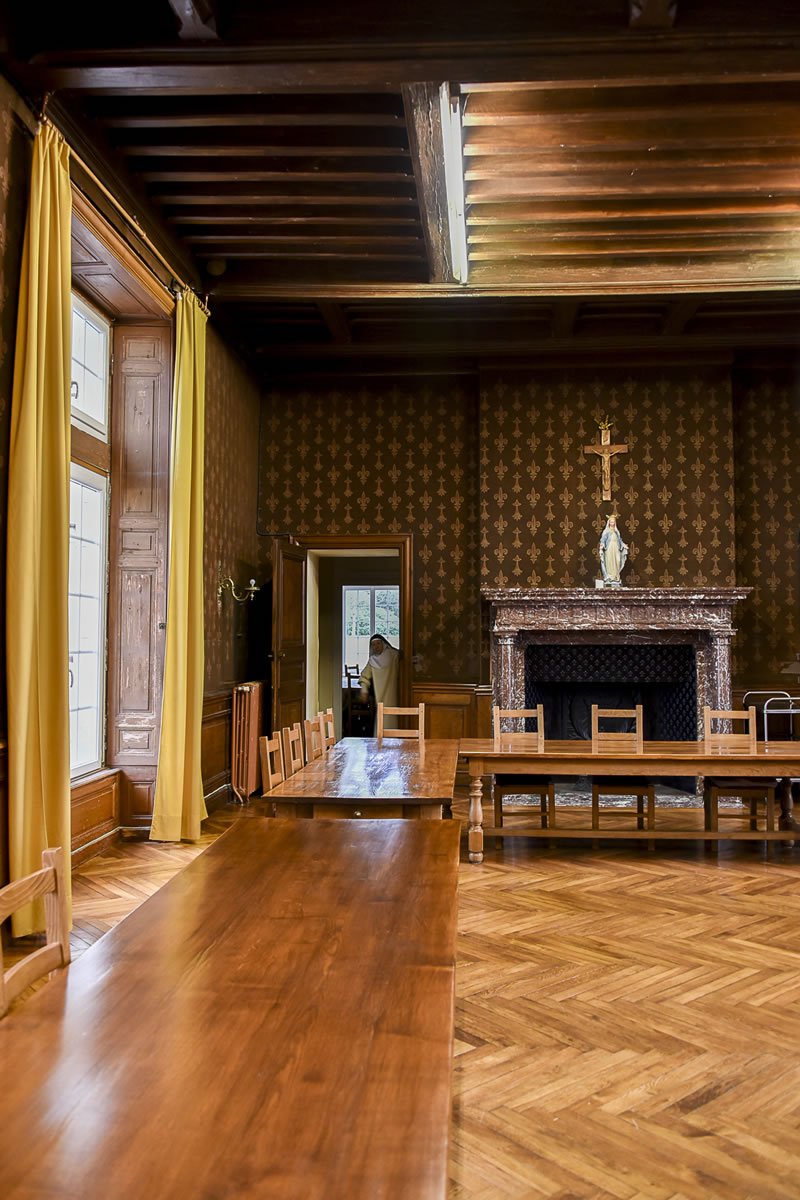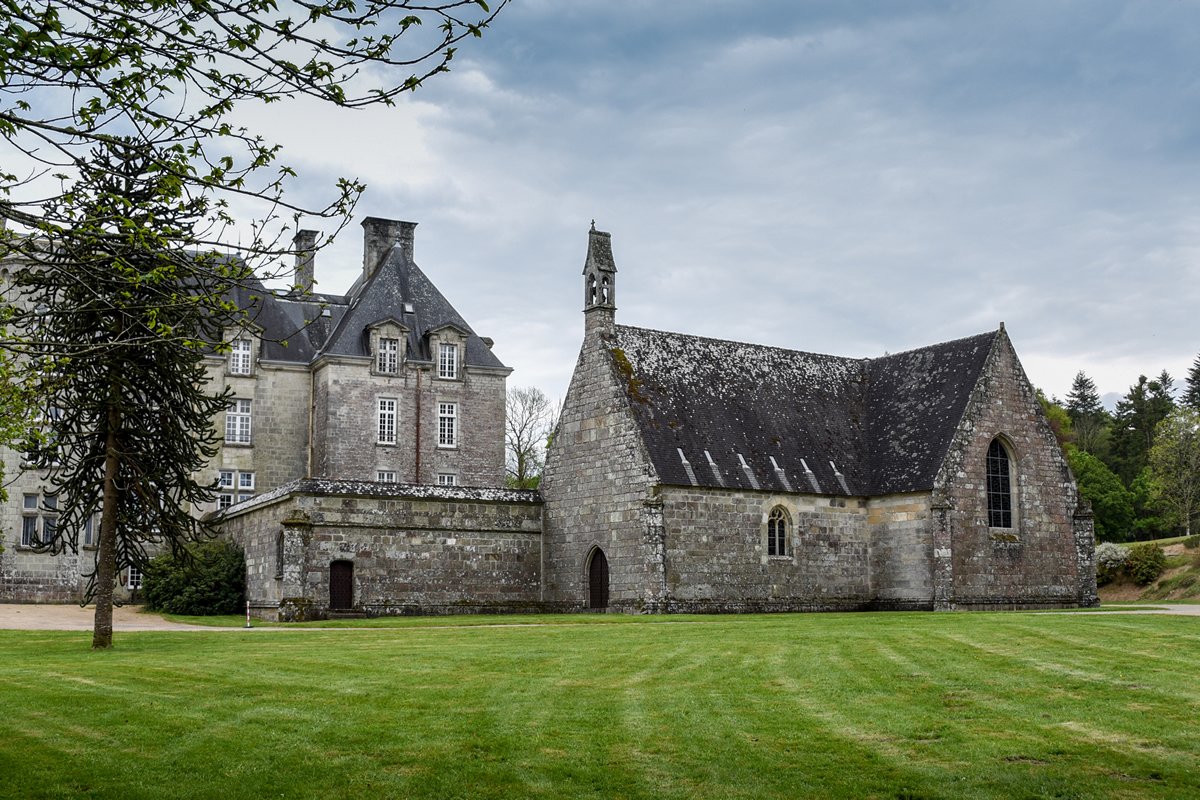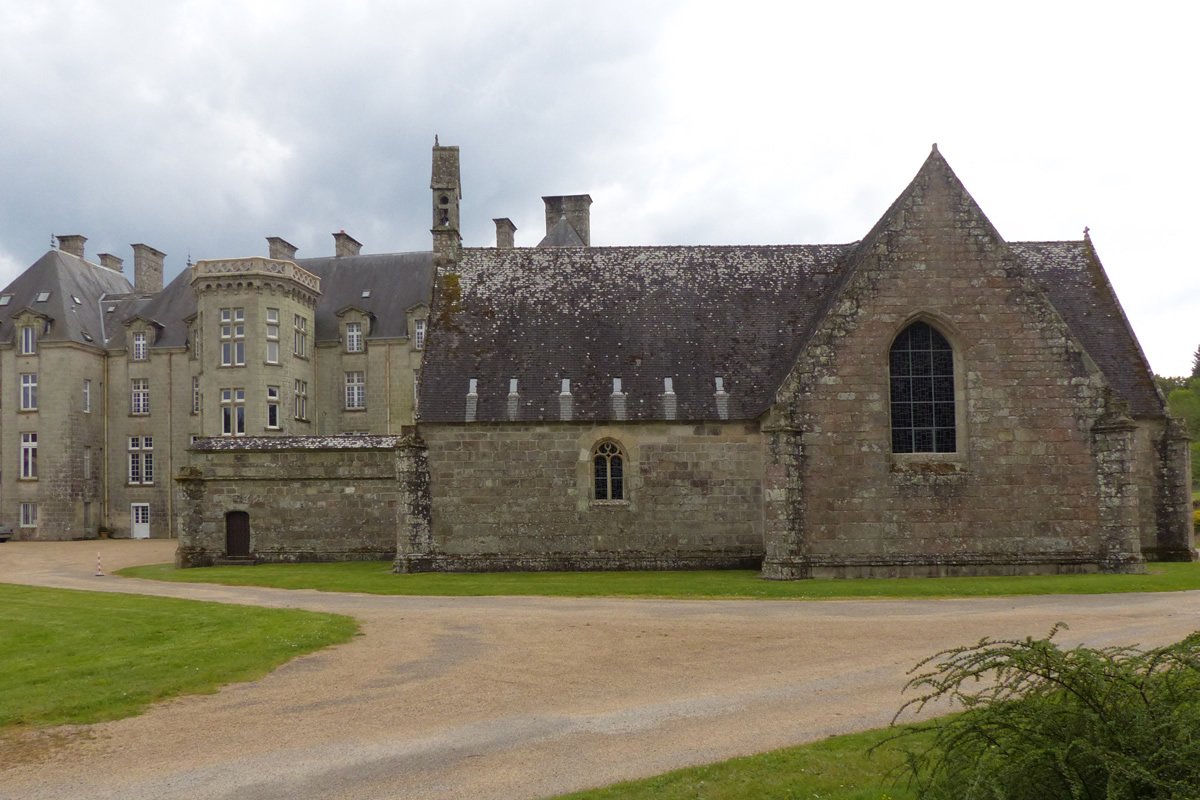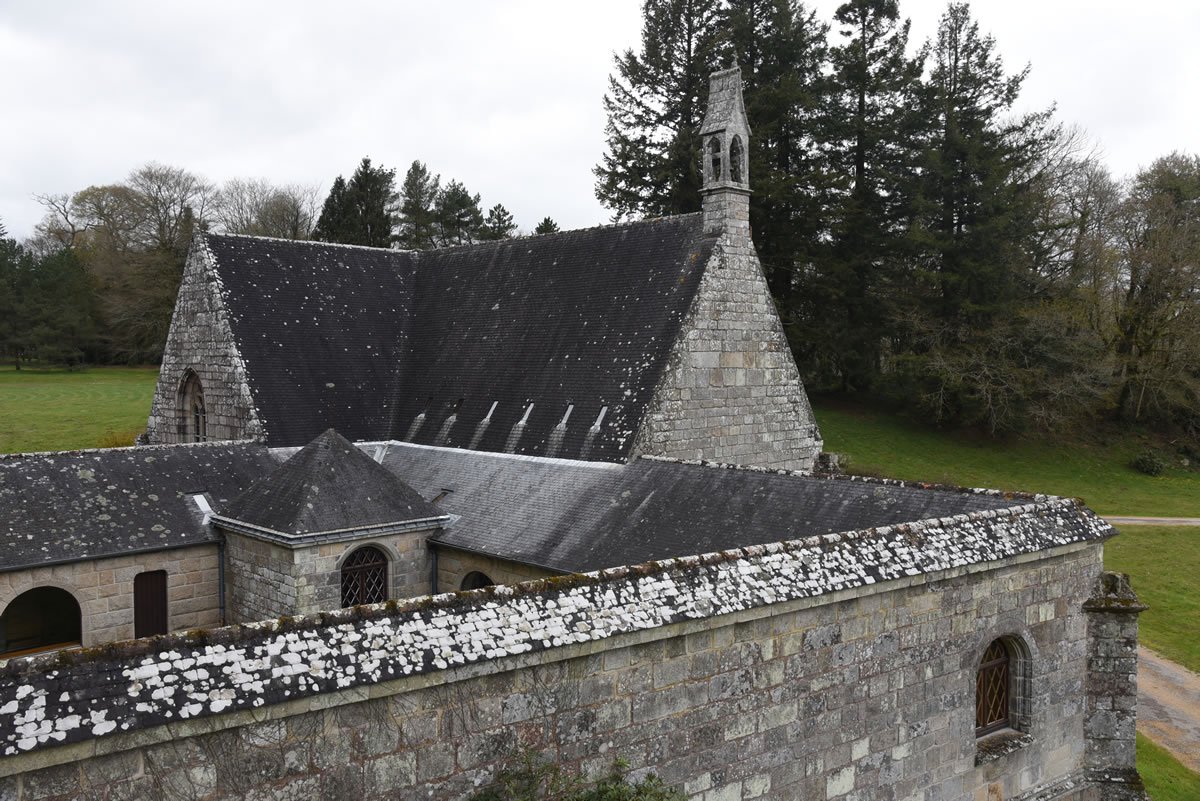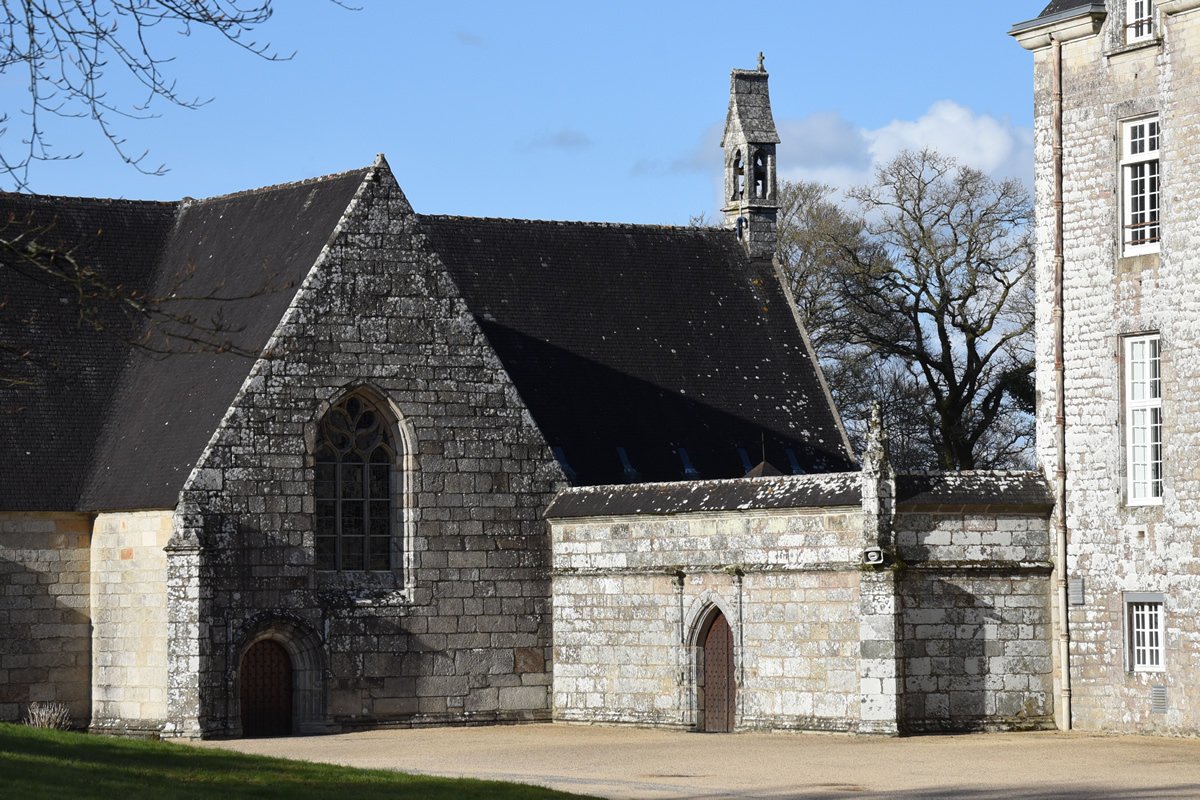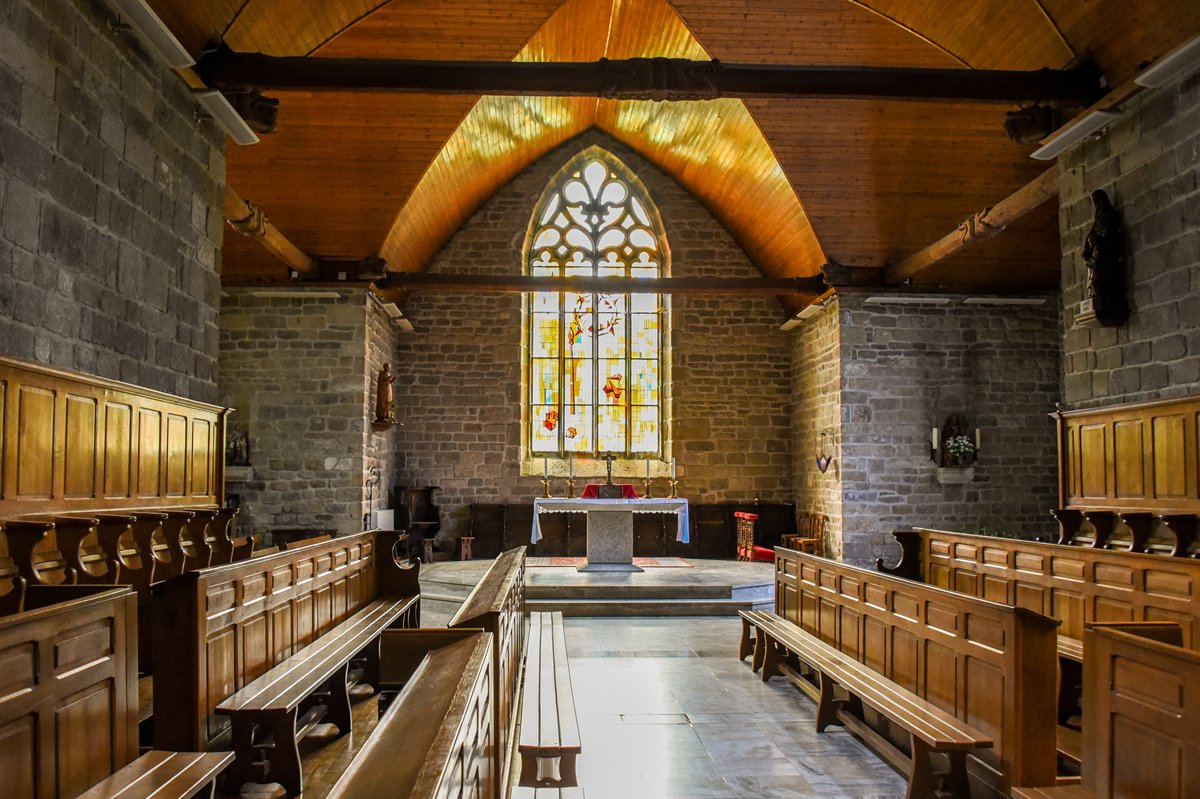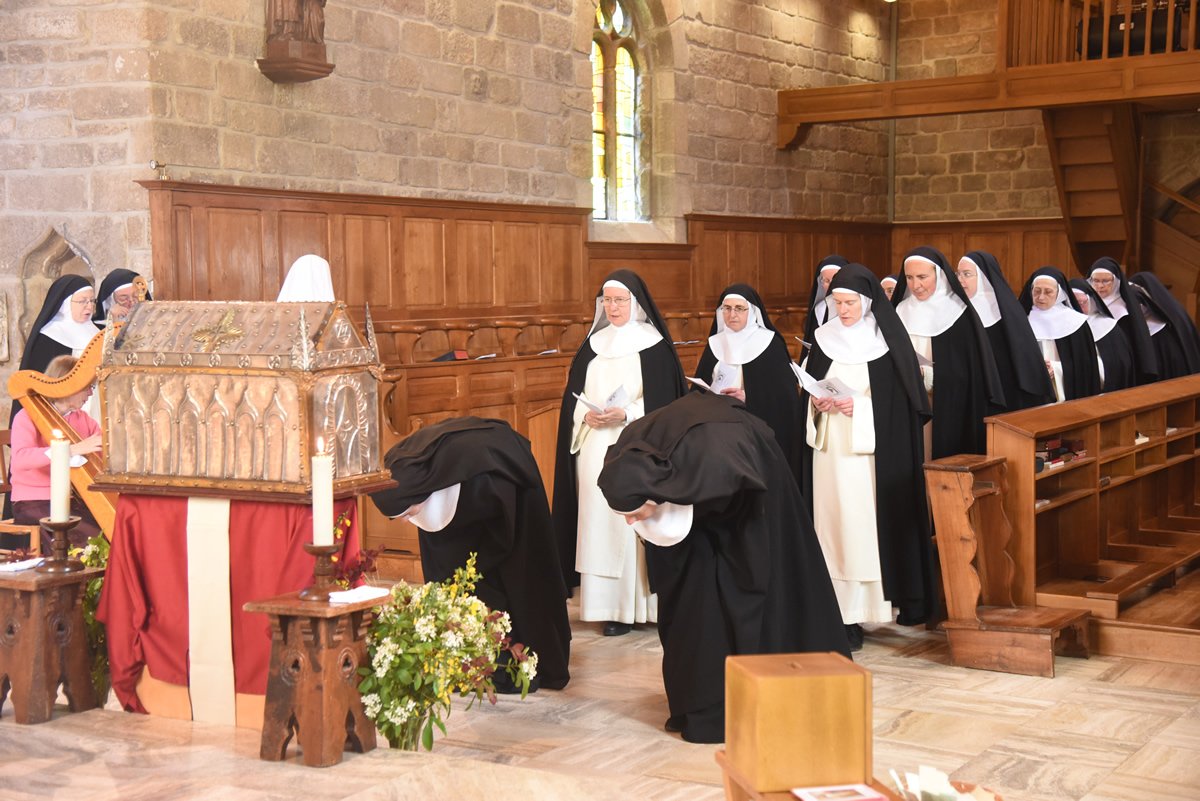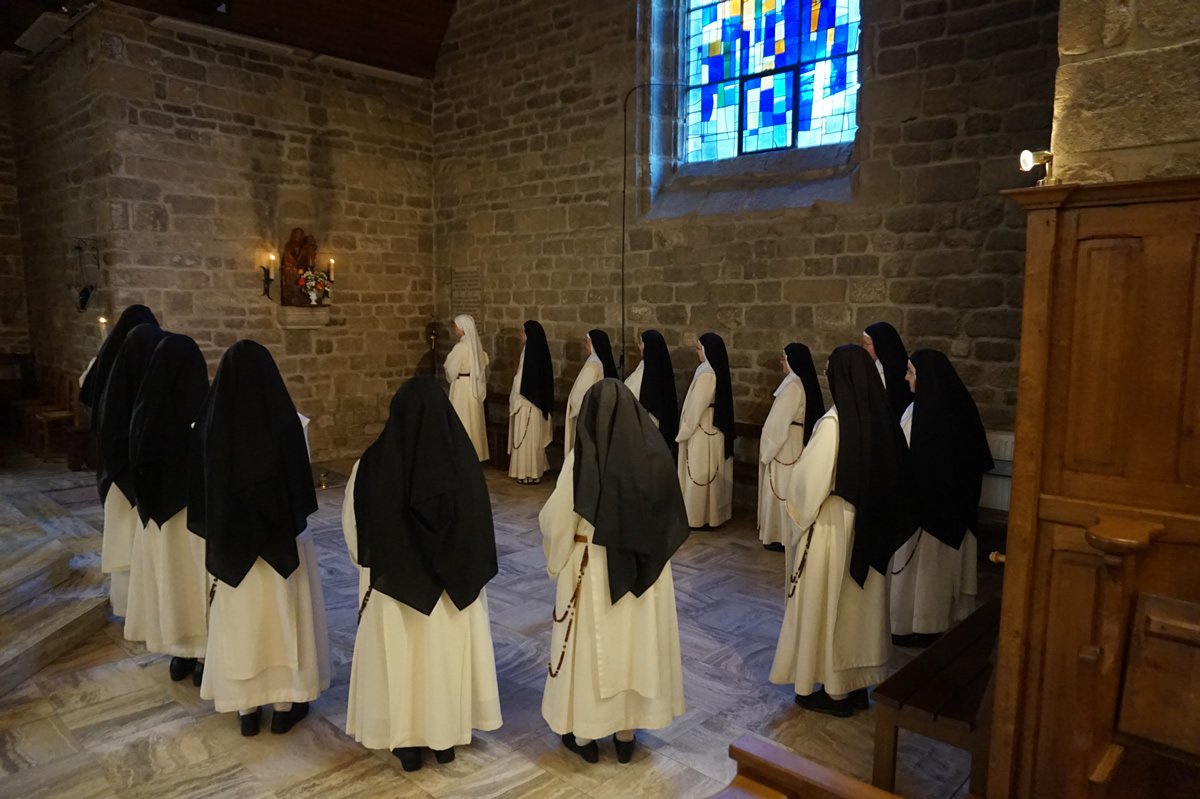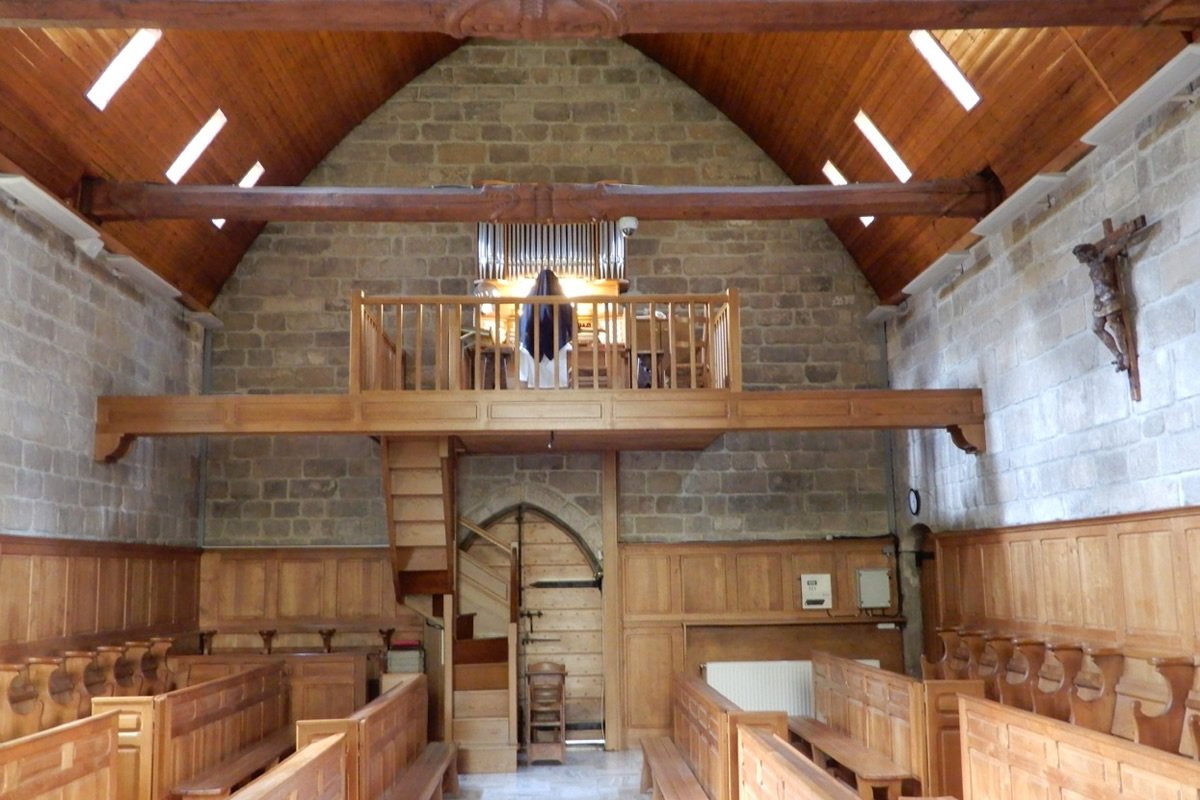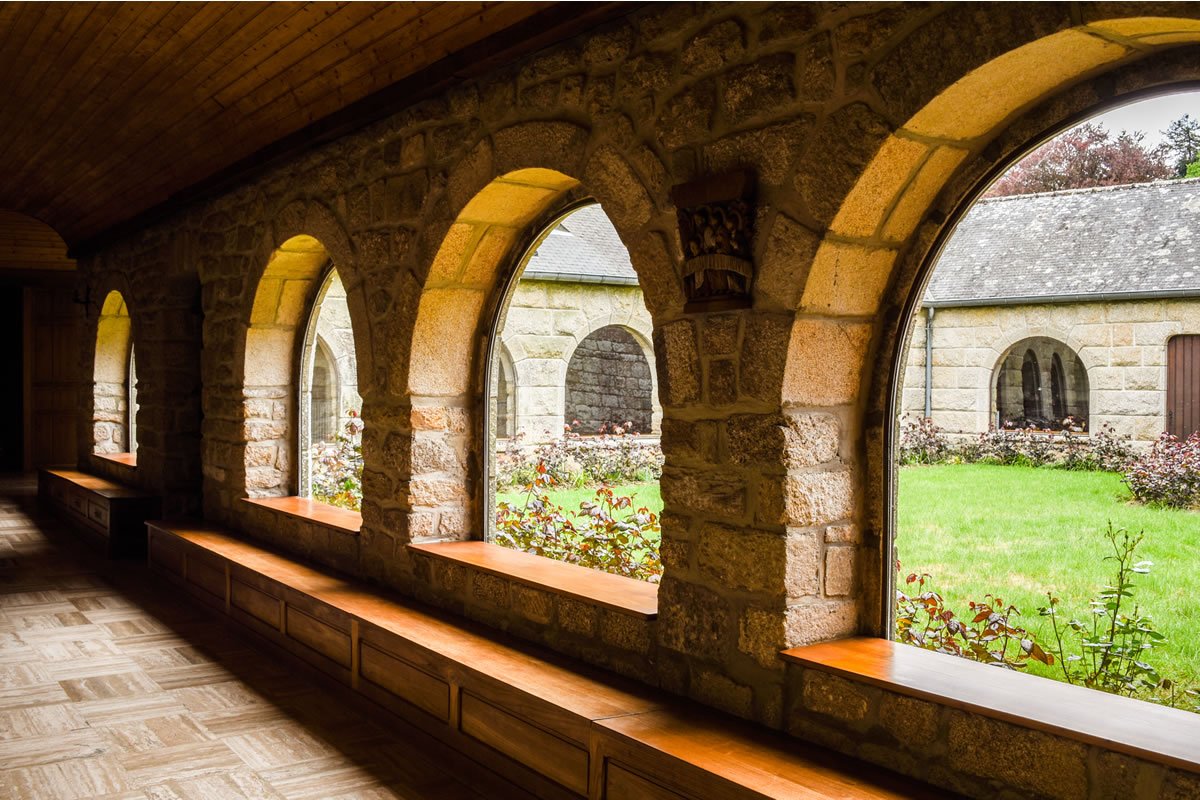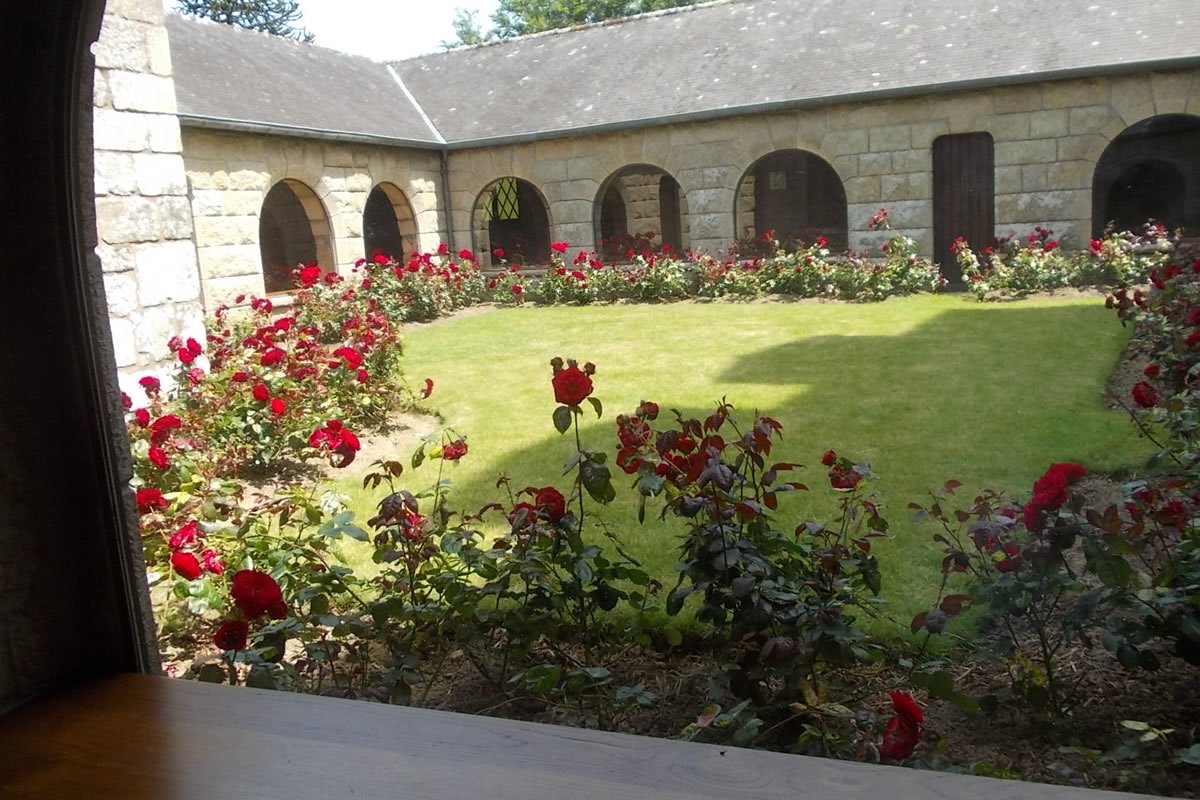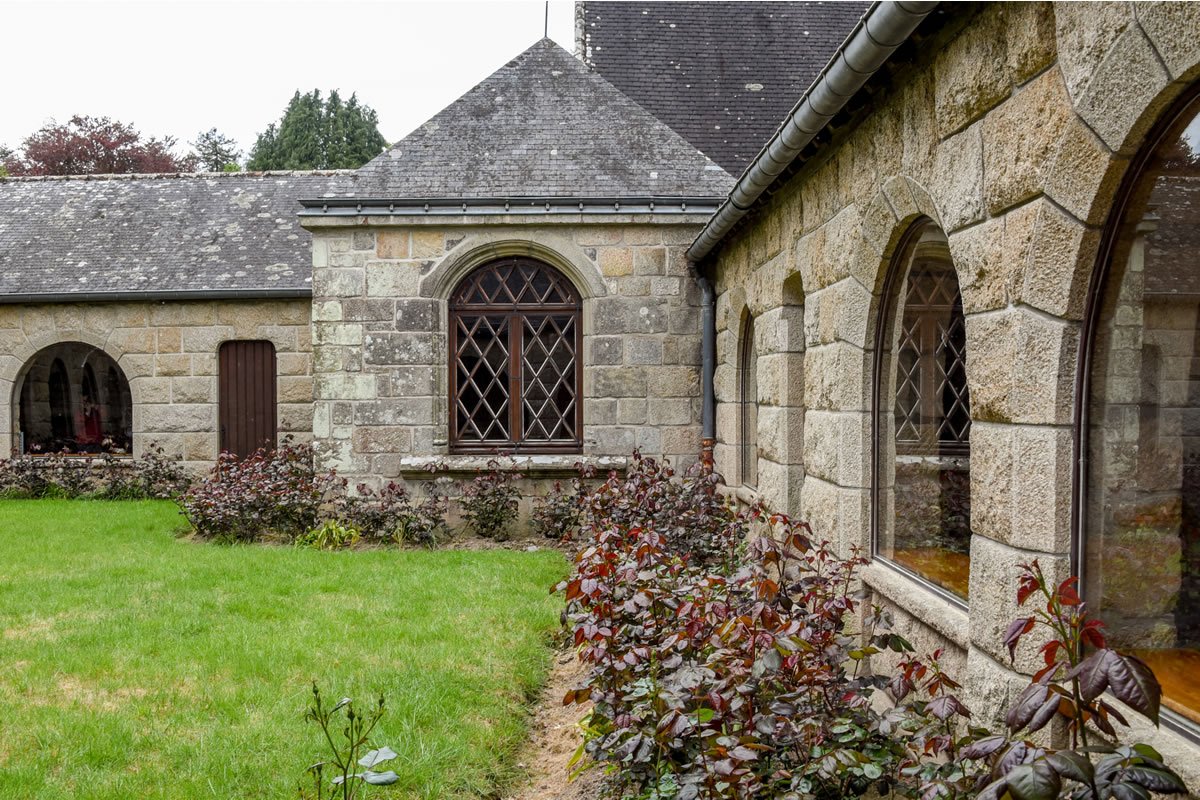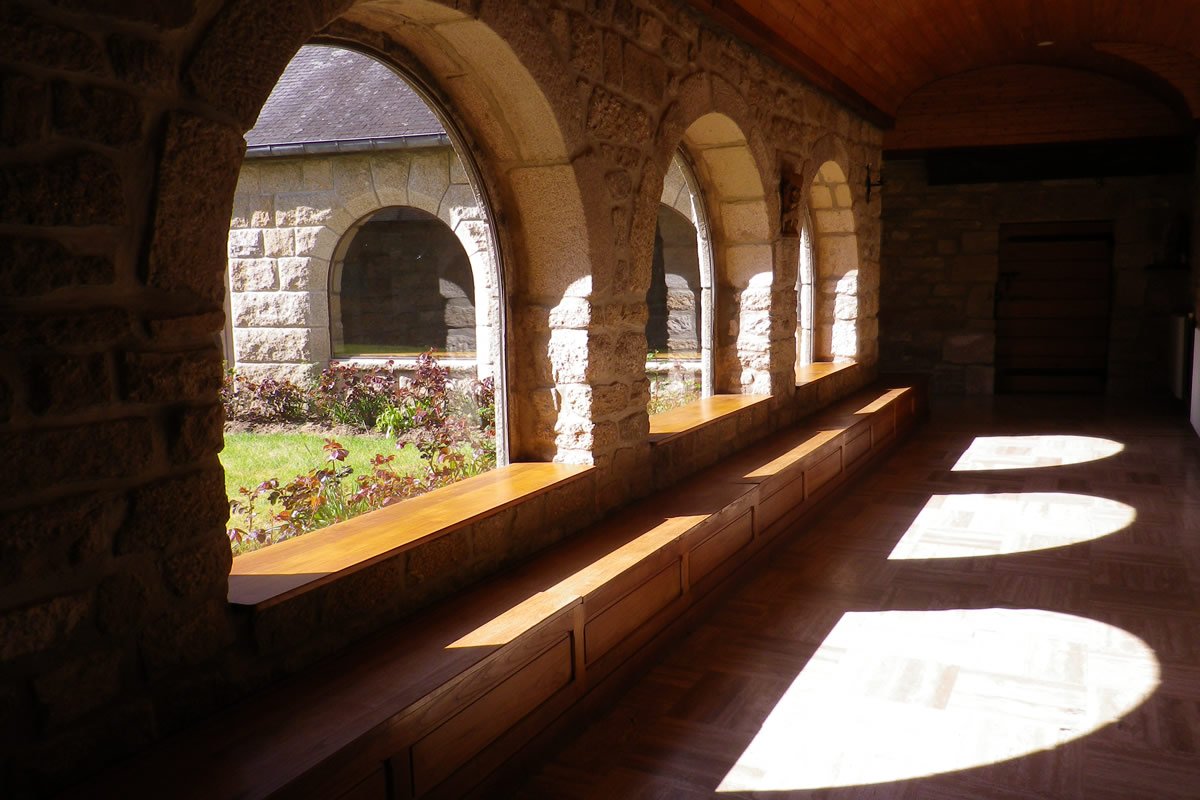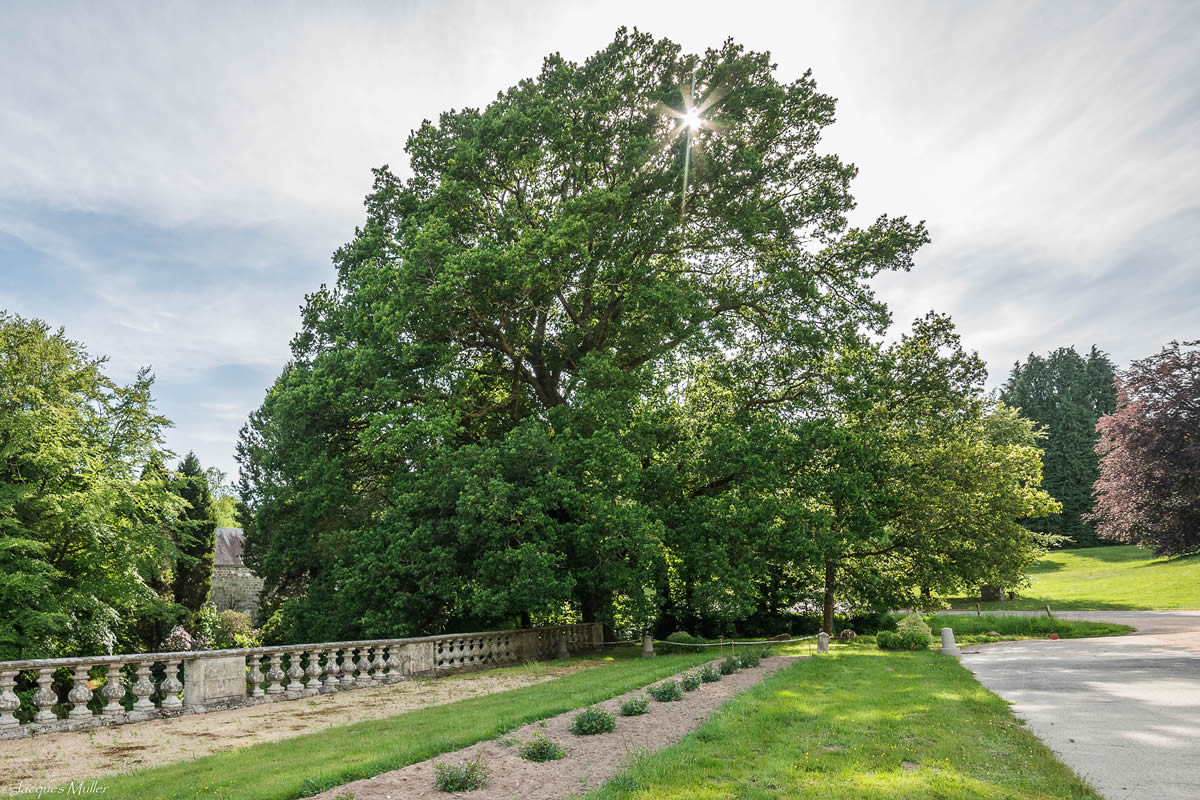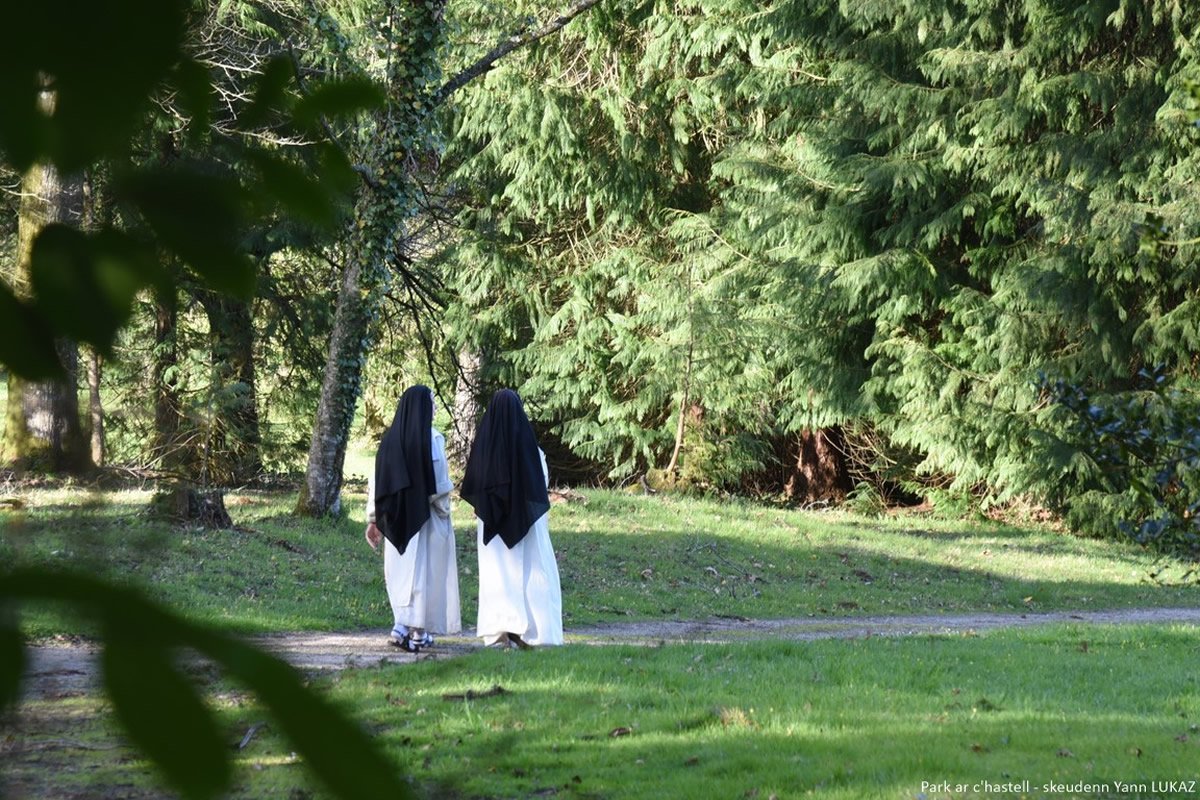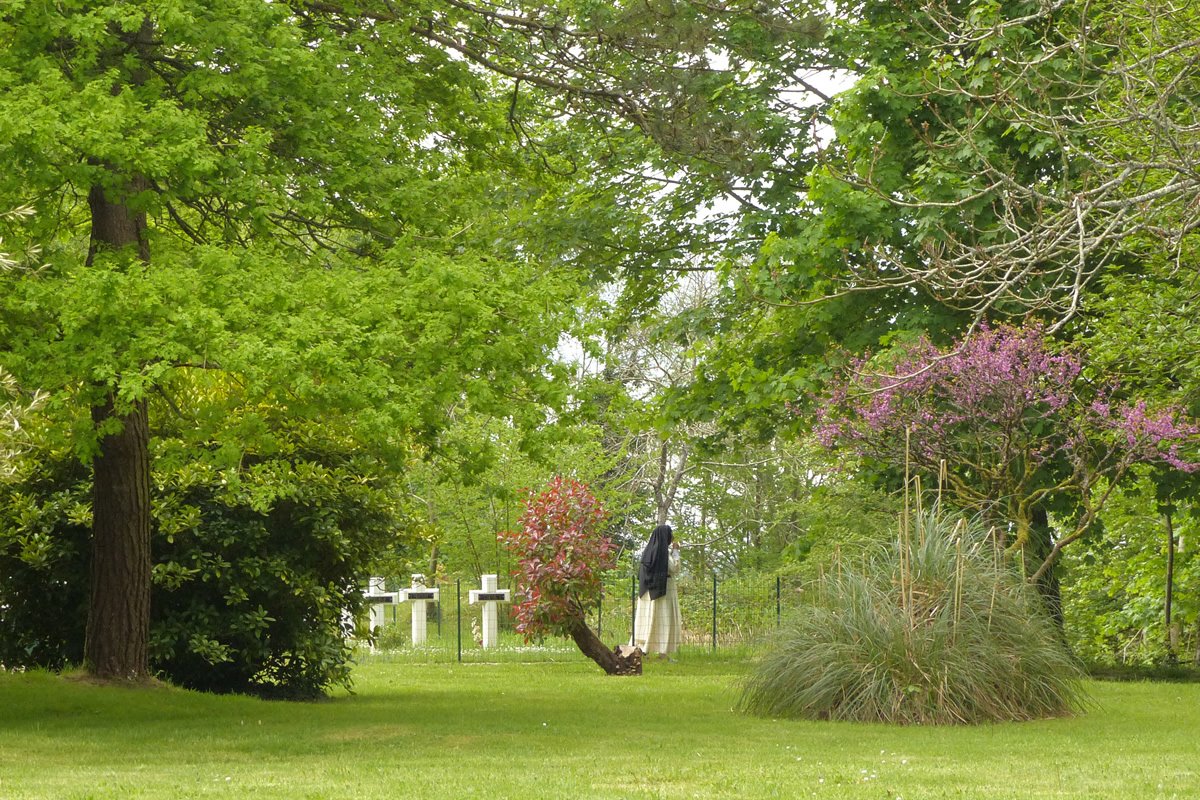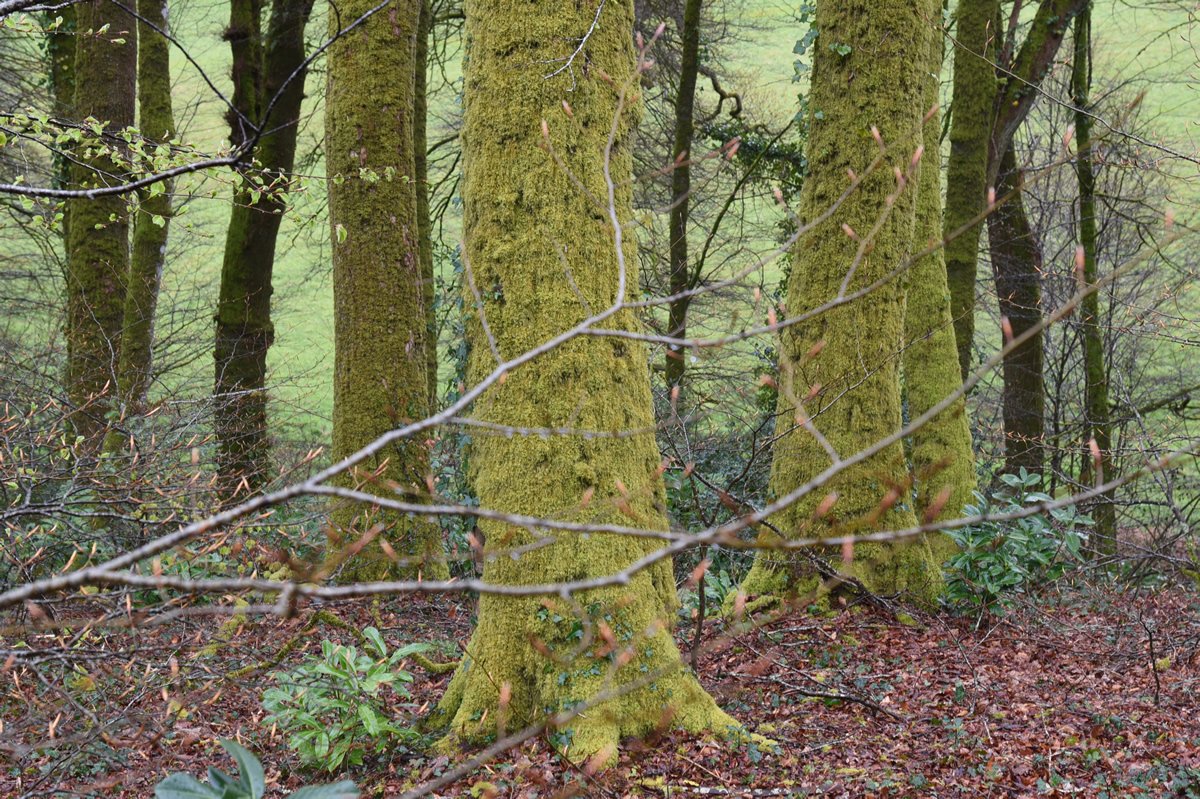The Estate at Pontcalec
Notre Dame de Joie, the Mother-House of the Dominicaines du Saint Esprit.
In 1291, Duke Jean II built the roadway and dug the lake. In this same period, a fortress was constructed, on an ancient feudal motte.
During the centuries that followed, due to various different allegiances, the land and estate passed into the hands of three of the great families of Brittany, the du Guesclin, the de Malestroit and the de Guer.
The estate was fortified in 1591 during the Wars of the League, and at this time, the troops of the Duc de Mercoeur destroyed the main part of the fortified castle.
It was re-built during the reign of Louis XIII and consisted of “two large main buildings and four pavilions”. Today, only a few ruins remain of these buildings; a tower with a staircase, two arched doorways and an impressive wall.
In 1675, the Pontcalec estate was elevated to a Marquisate by King Louis XIV, and given to Alain de Guer. At the death of his wife in 1676, the Marquis entered the priesthood, under the guidance of Père Maunoir. When he died, he was rector at Riec, and a canon at Vannes.
Pontcalec owes its place in history to the Conspiracy of Cellamare, during which the nobles of Brittany attempted to rise up against the power of the king. This uprising ended in defeat, and the Marquis of Pontcalec, Chrysogon-Clément, who had taken part, was beheaded in Nantes in 1720, together with three of his companions.
In 1795, a mobile column of the National Guard of Guémené and du Faouët burned the castle, but the ruins were restored by de Chouans.
At the start of the nineteenth century, Armand de Guer, the sixth and final marquis, founded a glassworks, and later an ironworks factory. In 1825 the company that ran the two factories took the name “Compagnie des Hauts Fourneaux et Forges de Pontcalec”.
In 1826, the marquis sold the estate to the company, but from 1833 the enterprise began to fail, and was liquidated and put out to tender. It was purchased in 1833 by the Count de Brissac, the brother-in-law of Armand de Guer. In 1851 he offered the estate of Pontcalec to his son Henri, together with those buildings that had survived the fire started by the revolutionary troops.
The main building, the west wing, which Count Henri and his wife Mathéa incorporated into the existing castle, was built in 1882 in the classical style. The eldest of their four children, Louis, inherited the estate. However, being unmarried, he sold it in 1913 to his nephew, Robert de Durfort-Civrac, the 10th Duc de Lorge.
During the Second World War, the buildings were occupied by German troops from the submarine base at Lorient, and later, by refugees from the region.
On 11th October 1955, the Duc de Lorge, being without an heir, sold the estate to Père Berto, who established the school of the Dominicaines du Saint-Esprit, and the children’s home Notre Dame de Joie.
Duc Robert died in 1972. A year earlier, after having spent two days in his former castle, he wrote: “Notre Dame de Joie has given me a feeling of indescribable sweetness, knowing that the past lives on in this dearly-beloved place, but in a manner that is even better than my family could ever have wished for, or I could ever have hoped for. May Providence continue to bless the beautiful work to which you are devoted.”
During the 1960s, a chapel was added to the castle. In the interior, a Latin inscription carved in stone gives a resumé of its history: “This chapel, dedicated to Saint Anne in the XVI century by the devotion of the ancients, fell into ruin and decay, and was, thanks to the generosity of Pluméliau, transferred and completely re-built here, at the same time as the building of the cloister, which was also built using ancient stones of the chapel of Saint Christine (of Locmalo, near Guéméné), in the year of Our Lord 1966-67.”
On the outskirts of the park stands the chapel of Saint Anne des Bois, built in 1865 by Countess de Cossé-Brissac in thanksgiving for the birth of her daughter after three sons – fulfilling a promise that she had made to Saint Anne. This small chapel was originally built for the exclusive use of the castle owners.

